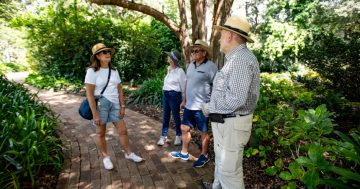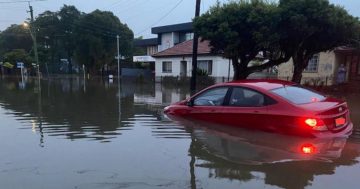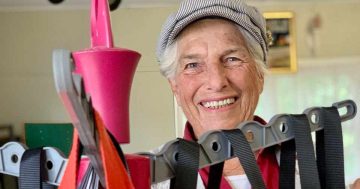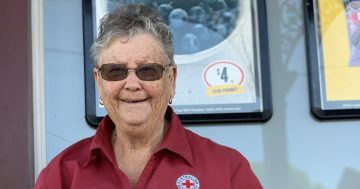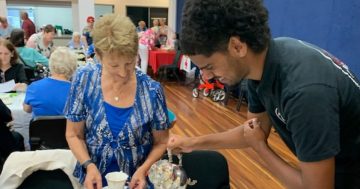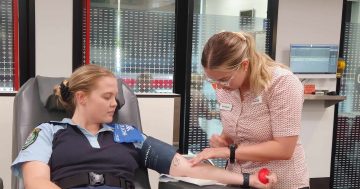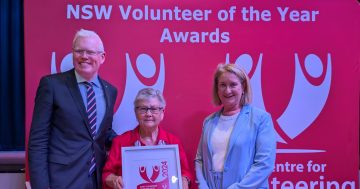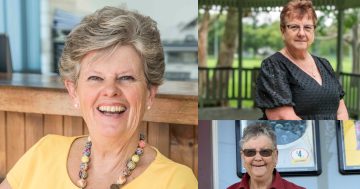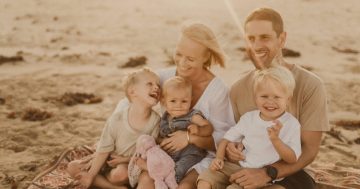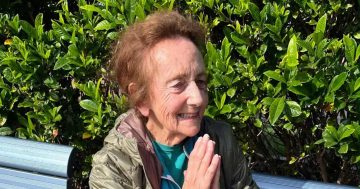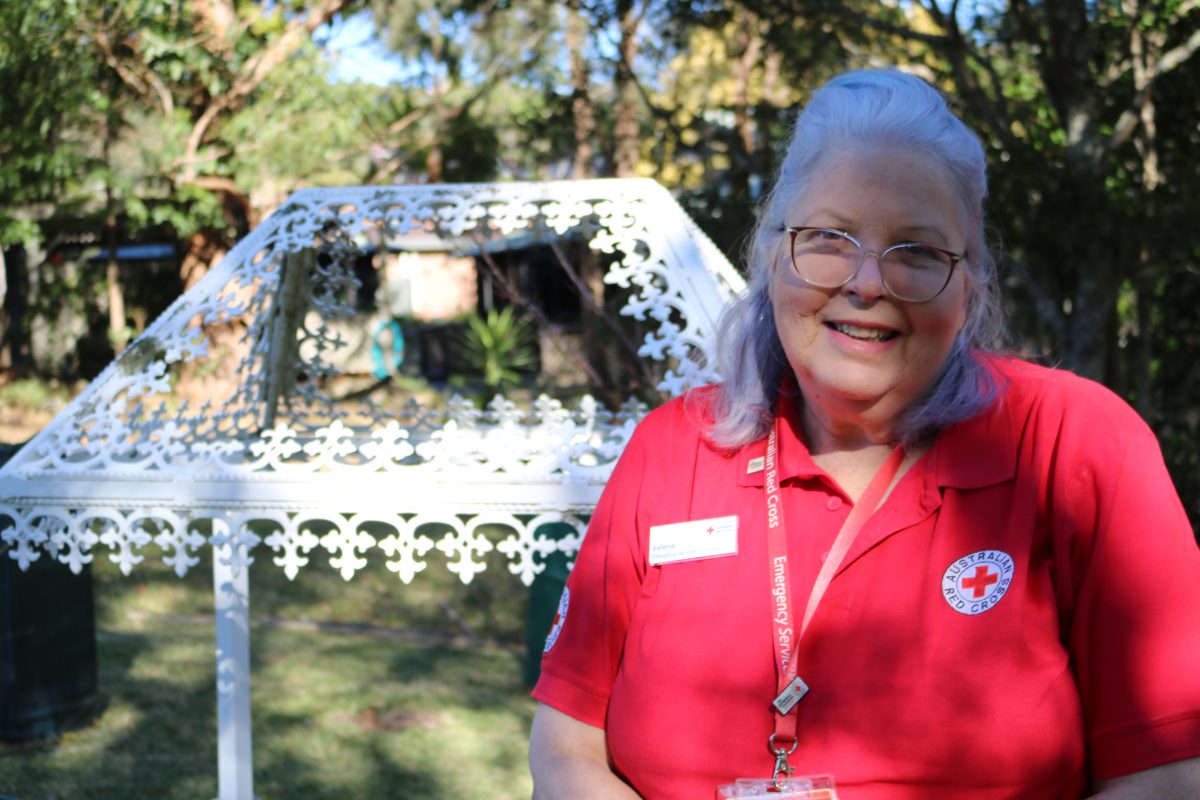
Valerie Hussain has been a Red Cross volunteer for almost 20 years but wishes she had started sooner. Photo: Jen White.
Red Cross volunteer Valerie Hussain has attended some of the state’s most traumatic disaster scenes, working alongside paramedics, police and fire officers.
Val’s role is not to provide clinical first aid, but to provide psychological first aid to help traumatised victims get through emergencies and out the other side on the road to recovery.
Red Cross is calling for people like Val to become volunteers to help deliver emergency response programs in the Illawarra and sometimes across the country to be where they’re needed most.
Val joined the ranks almost 20 years ago, following an experience in the devastating 1998 Wollongong floods.
“A friend of mine rang me in tears at 10 o’clock at night, saying, ‘We’re up in the roof space, there’s water all around us and the cars are floating – what do I do?’” Val recalls.
“I had no idea what to tell her to do and I had never felt helpless before. I’ve always been able to help people and guide them in the right direction and I felt totally helpless. I didn’t know what to do, didn’t know who to call.”
A few years later Val responded to a Red Cross recruitment drive and signed up.
Val became a preparedness presenter and then a trainer, teaching new volunteers about what they needed to do to help in an emergency, how traumatised people react and how long it can take for them to start recovering.
“When I first started volunteering, you’d go to an evacuation centre, someone would come in, and you’d say, ‘You’re wet, you need dry clothes’. Or, ‘You must be hungry, come over here and I’ll get you something to eat’,” she says.
“With psychological first aid, we don’t think for them. We actually ask them, ‘What’s the most important thing I can do for you?’ Because that (food and clothing) might not be a priority.
“We know that traumatised people can’t take in information and that’s part of the training we do, you need to calm people down. You talk to people and you see them staring off into the distance reliving it, so sometimes we need to bring them into the here and now so that they know they’re safe.”
Val, who is now a team leader, has been deployed to many natural emergencies but she says more often these days, volunteers are called on to provide support at collective trauma events, such as the Lindt Cafe siege and more recently, the deaths of five teenagers in a car crash at Buxton and the Hunter Valley bus crash.
“Our role is quite different to what it was when I first joined, which was local responses and not a lot else. I think it was probably five years after I joined when I first had an activation of any kind,” she says.
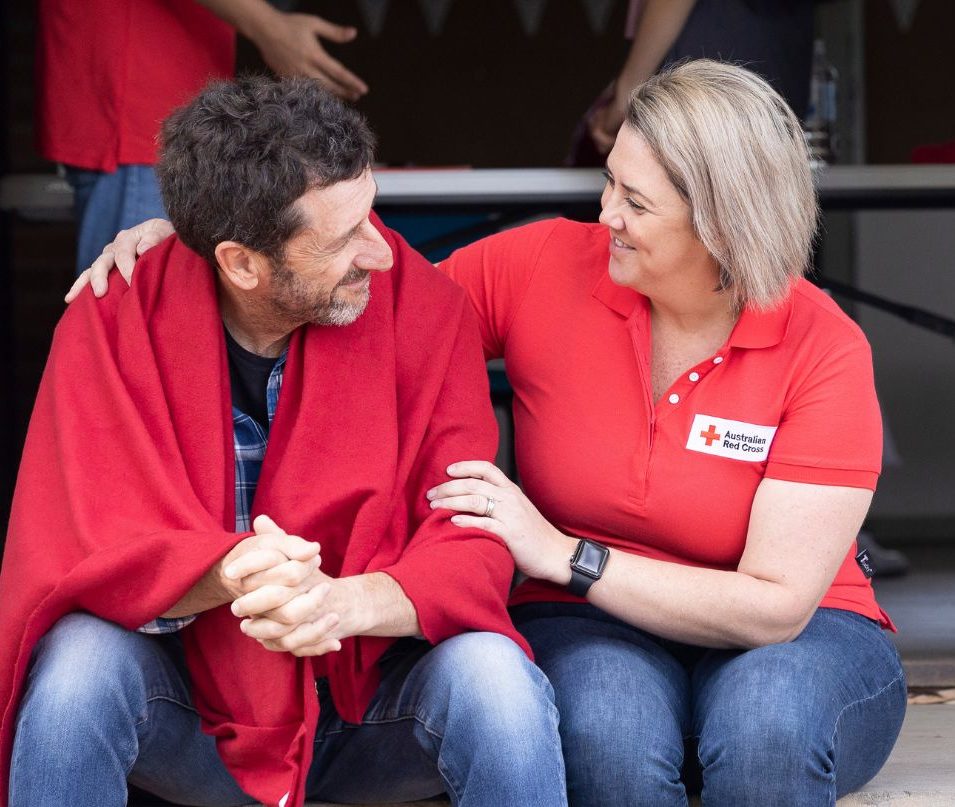
Red Cross volunteers provide psychological support for victims, as well as a variety of other roles with the organisation. Photo: Red Cross.
Val says the Buxton tragedy was a very tough experience but it was how her team responded that sticks in her mind.
“We were asked to bring all the cards and memorabilia back to the Wollongong office and turn it into a memorial book. We sorted it all out, even ironed everything out flat so that we could take photos, over 300 photos, and we compiled a photo book for each of the teenagers and presented them to the families.
“It was hard, compiling the photos. I did that for three months and it was every day in your face. And it was hard, but it was so worthwhile.
“I think that’s the whole thing about what we do, that sense of we’ve actually been able to help someone in a big way and help them to get back on the path to recovery. Because starting that recovery process, it’s really hard.”
Australian Red Cross State Manager Emergency Services Diana Bernardi is encouraging anyone with a passion to help and meet like-minded people to consider joining the volunteer community.
“As a volunteer this could mean supporting people in evacuation or recovery centres or supporting and delivering disaster preparedness activities and workshops in schools and communities. No matter your background, there is a role for you if you have the desire to help people in times of need,” Ms Bernardi said.
Val said the time to become a volunteer was before an emergency arrived, so people could get the correct training and be well prepared to help the community.
“We really need more volunteers, especially in the Wollongong area. When something happens we need to be able to rally really quickly eight to 10 people in sometimes a very short space of time. We need to boost our numbers and just make sure all of the communities are safe when something happens.”
However, Red Cross also needs volunteers beyond attending disaster scenes.
“There’s one emergency services umbrella but under that umbrella, there are lots of spokes. Some people might provide training or use the skills they’ve got in their everyday life, you can do office support – there is something for every volunteer to do, they just have to find what it is that suits them,” Val says.
“I absolutely wish 100 per cent that I had started volunteering earlier. I wished I’d known about it, and wished I’d done it at a much earlier age because it’s the best thing you can do. I’ve been through knee replacements, foot surgery, all sorts of things and there’s always something you can still do.
“It’s just amazing, to be able to help people and then to be able to achieve goals in your life. When I look back I can’t believe what I’ve been able to do in my volunteering life through Red Cross – things that I never thought I would ever do in my wildest dreams.”
For more information contact [email protected] or see volunteer roles at Red Cross.








